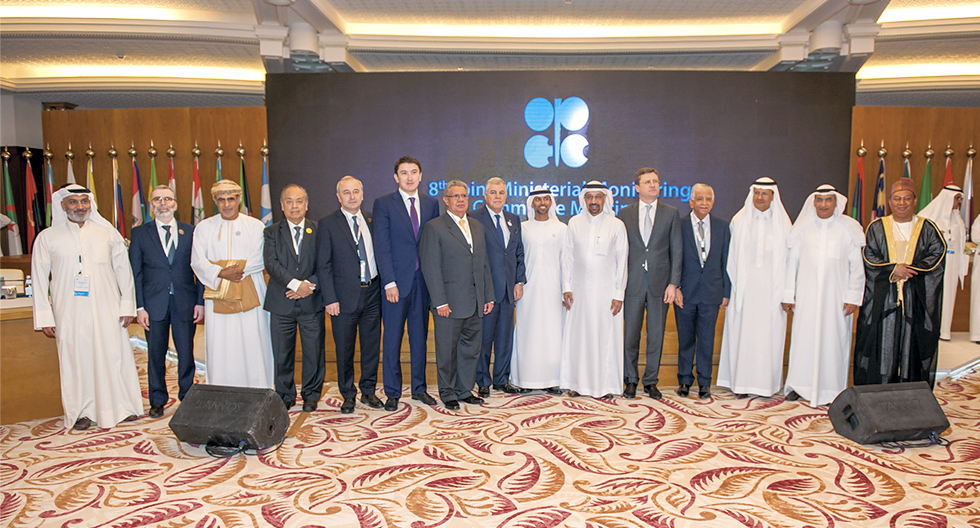The worst kept secret in the oil world this week is how much Russia and Saudi Arabia plan to increase output to cool rising crude prices in the coming weeks, the popular estimation suggesting that the spigots could open up to about 700,000 barrels a day in the second half of 2018.
Brent crude fell over 1.5% to US$74.21 at the start of this week and was 1.8% down on their last close, having initially risen on Friday after the OPEC agreement had failed to meet confirmed expectations of a 1 to 1.5million bopd increase – albeit without the meeting in Vienna announcing precisely what the agreed production figures were.
Disruptions in Venezuela and Angola, U.S. sanctions against Iran and Venezuela and a healthy global economy have all conspired to put the squeeze on global supplies, which had been cut by OPEC and non-OPEC, notably Russia, countries by 1.8 million bopd since 2017.
Norwegian energy intelligence group Rystad Energy released a number of compelling reasons in support of an oil output increase last week. This came after Saudi Arabia’s Minister of Energy, Khalid al Falih, had said demand in the second half of 2018 would two million barrels higher per day than in the first half of the year.
Rystad said in a statement during the OPEC meeting: “Our view is that there are fundamental signals within the market that show this decision is an essential move to avoid an overly tight market and potential price spike in the second half of this year,” says Bjørnar Tonhaugen, vice president of oil market research at Rystad Energy.
“If no consensus is reached, Saudi Arabia and Russia will likely choose to raise output regardless, possibly in a coalition with other countries – which would also exacerbate tensions with Iran.”
By Rystad Energy’s estimates, global oil products demand in the third quarter will increase by 1.1 mmbbl/d quarter-on-quarter, owing to “seasonally higher demand for transportation fuels during 3Q across the globe, increased power generation demand in the Middle East and strong NGLs demand growth in the U.S.
“The market will lose additional supply from Venezuela and Iran during the course of 2018. Although it is too early to know the full impact of U.S. sanctions on Iranian production,” said Rystad Energy, which expects Iranian production to drop by ~700,000 bbl/d by December 2018, “but the loss could be larger”.
“There are indications that Iranian oil exports have already begun dropping during the first half of June, mostly to Europe. We also expect Venezuelan production to decline a further 150,000 bbl/d towards year-end, with risks still skewed to the downside,” says Tonhaugen.
In Rystad Energy’s view, the risk of production shortfall in fellow OPEC members Iran and Venezuela (possibly 850,000 bbl/d by year-end) and the ensuing risk of a price spike in the near term, causing “consumer anxiety”, is the most important reason underpinning the shift in Saudi Arabia’s policy stance since mid-May.
The Oslo headquartered company precited that growth from US shale will be limited to 100,000-150,000 bbl/d per month at current oil prices and differentials, owing mostly to pipeline takeaway constraints in the Permian.
“Our latest shale activity data suggests fracking activity will stay largely flat in the Permian from April towards year-end, but production will grow robustly,” says Artem Abramov, vice president of shale research at Rystad Energy.
Therefore, in the current market, where the combined effect of demand growth and supply shortfalls is in the magnitude of 2 mmbbl/d, OPEC is again the only effective swing producer.
Rystad added that the risk for new unplanned supply disruptions would exacerbate the already tight global oil market situation.
The risk of unplanned supply disruptions is on the rise, exemplified by the resumption of outages in Nigeria in May 2018 (Forcados, Bonny Light) and last week in Libya where the Ras Lanuf and Es Sider ports were shut due to rebel attacks causing a production loss of 400,000 bbl/d.
“With the oil market already in a 720,000 bbl/d deficit for 2Q before the Libya outage, the tightness already apparent in the market gives any outage greater significance and potential market sway,” Tonhaugen says.





